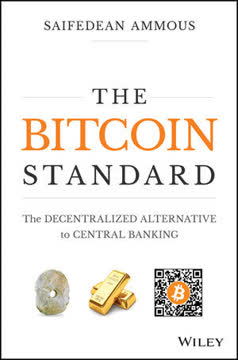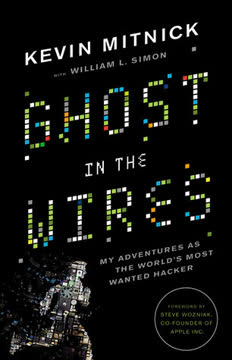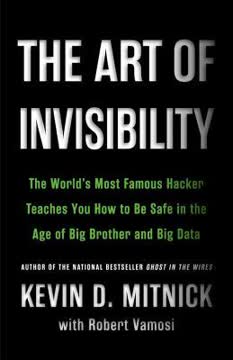가지 주요 요점
1. 사회 공학은 인간 심리를 이용하여 보안을 침해한다
"보안은 제품이 아니라 과정이다." 더 나아가, 보안은 기술 문제가 아니라 사람과 관리의 문제이다.
인간의 취약성. 사회 공학 공격은 모든 보안 시스템에서 가장 약한 고리인 인간을 목표로 한다. 기술적 취약성과 달리, 인간의 약점은 패치나 업데이트로 해결할 수 없다. 사회 공학자는 도움을 주고자 하는 욕구, 신뢰하려는 경향, 문제에 휘말릴까 두려워하는 심리 등 자연스러운 인간의 성향을 악용한다.
심리적 조작. 이러한 공격은 시스템을 직접 해킹하는 대신 사람을 속이고 영향을 미치는 데 의존한다. 일반적인 전술로는 다음이 포함된다:
- 권위자의 사칭
- 긴급 상황이나 위기 조성
- 허영심이나 탐욕에 호소
- 호감이나 감사받고자 하는 인간의 욕구 악용
이러한 심리적 원칙을 이해하고 활용함으로써, 사회 공학자는 가장 정교한 기술적 방어도 우회할 수 있다.
2. 신뢰는 성공적인 사회 공학 공격의 기초이다
"일단 신뢰를 얻으면, 성문이 열리고 그는 원하는 정보를 가져갈 수 있다."
라포 형성. 사회 공학자는 대상과 빠르게 신뢰와 라포를 형성하는 데 능숙하다. 그들은 종종 다음과 같은 기술을 사용한다:
- 알려진 직원이나 임원의 이름 언급
- 회사 절차나 용어에 대한 내부 지식 시연
- 공통의 관심사나 경험 표현
- 작은 호의나 도움 제공으로 상호 호혜감 조성
확립된 신뢰 악용. 신뢰가 확립되면 공격자는 더 쉽게:
- 민감한 정보를 요청
- 제한된 구역에 물리적 접근
- 보안을 위협하는 행동을 하도록 대상 설득
가장 위험한 사회 공학자는 오랜 기간 동안 설득력 있는 연기를 유지하며 점차 신뢰와 접근 수준을 높이는 사람들이다.
3. 정보 수집은 설득력 있는 사전 텍스트를 작성하는 데 필수적이다
"철저한 조사는 나만의 신중함의 브랜드이다. 그래서 누구와도 직원만큼의 지식을 가지고 대화할 수 있다."
정찰 단계. 공격을 시작하기 전에 사회 공학자는 대상 조직과 개인에 대해 철저한 조사를 수행한다. 여기에는 다음이 포함될 수 있다:
- 회사 웹사이트, 연례 보고서, 보도 자료 연구
- 공개된 데이터베이스와 소셜 미디어 프로필 조사
- 버려진 문서 찾기
- 직원으로부터 정보를 얻기 위한 무해한 전화 걸기
지식 기반 구축. 수집된 정보는 공격자가:
- 조직의 구조와 문화를 이해
- 잠재적 대상과 그들의 역할 식별
- 회사 특유의 용어와 절차 학습
- 공격을 위한 설득력 있는 시나리오와 사전 텍스트 작성
공격자의 지식이 상세하고 정확할수록, 그들의 사칭은 더 설득력 있고 성공 가능성도 높아진다.
4. 사전 텍스트 작성: 대상을 조작하기 위한 시나리오 만들기
"좋은 사회 공학자는 상대를 절대 과소평가하지 않는다."
페르소나 작성. 사전 텍스트 작성은 대상을 조작하기 위해 허구의 시나리오를 만들고 역할을 맡는 것을 포함한다. 효과적인 사전 텍스트는 종종 다음을 포함한다:
- 권위자의 사칭 (예: IT 지원, 임원, 공급업체)
- 긴급하거나 시간에 민감한 상황 조성
- 대상이 원하는 것 또는 필요한 것 제공
적응력이 핵심. 숙련된 사회 공학자는:
- 대상의 반응에 따라 사전 텍스트를 빠르게 조정
- 여러 백업 시나리오 준비
- 즉석에서 설득력 있는 세부 사항 즉흥적으로 추가
가장 성공적인 사전 텍스트는 완전히 그럴듯해 보이며 대상의 조직 내 역할에 대한 기대와 경험에 부합하는 것이다.
5. 맞춤형 전술: 특정 인간 성향 악용
"사람들은 집에서 버리는 것에 대해 별로 신경 쓰지 않는다: 전화 요금 청구서, 신용카드 명세서, 의약품 병, 은행 명세서, 업무 관련 자료 등."
심리적 트리거. 사회 공학자는 특정 인간 성향을 악용하기 위해 다양한 전술을 사용한다:
- 권위: 권력자의 사칭으로 순응을 강요
- 호감: 라포를 형성하여 대상을 더 동의하게 만듦
- 상호 호혜: 호의를 제공하여 의무감을 조성
- 일관성: 사람들의 약속에 일관되게 보이고자 하는 욕구 활용
- 사회적 증거: 동료 압력이나 다른 사람들의 행동을 이용하여 행동에 영향
- 희소성: 긴급성이나 제한된 가용성 조성
취약점 타겟팅. 공격자는 종종 다음에 집중한다:
- 보안 절차에 익숙하지 않은 신입 직원
- 권위를 두려워하거나 기쁘게 하려는 하위 직원
- 도움을 주도록 조건화된 IT 지원 인력
- 스트레스나 시간 압박을 받는 직원
공격자는 대상의 특정 심리적 취약성에 맞춰 접근 방식을 조정함으로써 성공 가능성을 크게 높인다.
6. 물리적 보안은 디지털 방어만큼 중요하다
"덤스터 다이빙은 목표의 쓰레기를 뒤져 귀중한 정보를 찾는 것을 설명하는 용어이다. 목표에 대해 배울 수 있는 정보의 양은 놀랍다."
디지털을 넘어. 사이버 보안에 많은 초점이 맞춰져 있지만, 물리적 보안도 중요한 취약점으로 남아 있다. 사회 공학자는 약한 물리적 보안을 다음과 같이 악용한다:
- 테일게이팅: 허가된 인원을 따라 제한 구역에 들어감
- 사칭: 가짜 배지나 변장을 사용하여 진입
- 덤스터 다이빙: 버려진 문서를 뒤져 민감한 정보 찾기
종합적 접근. 포괄적인 보안은 다음을 다루어야 한다:
- 접근 제어 시스템 및 절차
- 물리적 보안에 대한 직원 인식 및 교육
- 문서 및 미디어의 안전한 폐기 관행
- 방문자 관리 및 에스코트 정책
조직은 물리적 보안의 침해가 디지털 시스템과 민감한 정보의 손상으로 쉽게 이어질 수 있음을 인식해야 한다.
7. 직원 교육과 인식이 최고의 대응책이다
"직원들은 고위 경영진이 프로그램에 완전히 전념하고 있음을 보아야 한다. 그 전념은 단순한 형식적인 '우리는 축복을 준다'는 메모가 아니라 진짜여야 한다."
지속적인 교육. 사회 공학에 대한 효과적인 방어는 다음을 요구한다:
- 모든 직원에 대한 정기적인 보안 인식 교육
- 교육을 테스트하고 강화하기 위한 모의 사회 공학 공격
- 보안 정책 및 절차의 명확한 전달
- 보안 의식을 고취하는 문화 조성
직원 권한 부여. 교육은 다음에 중점을 두어야 한다:
- 일반적인 사회 공학 전술 인식
- 자신이 다루는 정보의 가치 이해
- 신원 및 권한 확인 절차 숙지
- 의심스러운 활동을 보고하는 데 자신감 갖기
목표는 직원들을 잠재적 취약점에서 사회 공학 공격에 대한 능동적이고 인식 있는 첫 번째 방어선으로 전환하는 것이다.
8. 확인 절차는 사회 공학자를 저지하는 데 필수적이다
"확인, 확인, 확인. 대면하지 않은 요청은 요청자의 신원을 확인하지 않고는 절대 받아들여져서는 안 된다."
다단계 확인. 강력한 확인 절차는 다음을 포함해야 한다:
- 알려진 연락처 번호를 사용하여 요청 확인을 위한 콜백 절차
- 민감한 시스템 또는 정보 접근을 위한 다단계 인증
- 요청자의 신원 및 권한 확인을 위한 확립된 프로토콜
- 확인 절차의 정기적인 감사 및 업데이트
일관성이 중요. 조직은 다음을 보장해야 한다:
- 모든 직원이 확인 절차를 이해하고 따름
- 요청자의 권위나 긴급성에 관계없이 절차를 일관되게 적용
- 적절한 확인 절차를 따르는 것이 불편함이 아니라 칭찬받는 문화 조성
효과적인 확인 절차는 사회 공학자에게 여러 체크포인트를 극복해야 하는 큰 장벽을 만들고 탐지 위험을 증가시킨다.
9. 보안 정책은 포괄적이고 일관되게 시행되어야 한다
"보안 정책을 작성하고 배포하는 것은 위험을 줄이기 위한 기본 단계이지만, 대부분의 경우 준수는 개별 직원에게 맡겨진다."
정책 프레임워크. 효과적인 보안 정책은 다음을 다루어야 한다:
- 데이터 분류 및 처리 절차
- 접근 제어 및 인증 요구 사항
- 사건 보고 및 대응 프로토콜
- 물리적 보안 및 방문자 관리
- 회사 자원의 허용 가능한 사용
- 소셜 미디어 및 외부 커뮤니케이션 지침
구현 및 시행. 효과적이려면 정책은 다음을 필요로 한다:
- 모든 직원에게 명확하게 전달되고 쉽게 접근 가능
- 새로운 위협과 기술을 다루기 위해 정기적으로 업데이트
- 조직의 모든 수준에서 일관되게 시행
- 가능한 경우 기술적 통제에 의해 지원 (예: 비밀번호 복잡성 요구 사항)
잘 설계되고 적절히 구현된 보안 정책은 직원 행동을 안내하고 사회 공학자의 공격 표면을 줄이는 프레임워크를 만든다.
10. 보안과 생산성의 균형을 맞추는 것은 지속적인 도전이다
"기업 보안은 균형의 문제이다. 보안이 너무 적으면 회사가 취약해지지만, 보안에 너무 많은 비중을 두면 비즈니스에 지장을 주어 회사의 성장과 번영을 저해한다."
균형 찾기. 조직은 다음 사이에서 균형을 맞춰야 한다:
- 강력한 보안 조치 구현
- 운영 효율성과 직원 생산성 유지
- 긍정적이고 신뢰할 수 있는 작업 환경 조성
적응적 접근. 이 균형을 달성하려면 다음이 필요하다:
- 중요한 자산과 취약점을 식별하기 위한 정기적인 위험 평가
- 특정 역할과 부서에 맞춘 보안 조치
- 워크플로우에 최소한의 방해를 주는 보안 통제 구현
- 보안 조치의 영향에 대한 직원 피드백 수집
- 실질적인 효과를 기반으로 정책 및 절차 지속적으로 개선
목표는 조직의 자산을 보호하면서 비즈니스 수행 및 혁신 능력을 과도하게 방해하지 않는 보안 태세를 만드는 것이다.
마지막 업데이트 날짜:
FAQ
What's The Art of Deception about?
- Focus on Social Engineering: The book explores how social engineers manipulate individuals to obtain confidential information, emphasizing psychological tactics over technical hacking.
- Real-Life Examples: Kevin Mitnick shares anecdotes and case studies that demonstrate the methods used by social engineers, making the content engaging and relatable.
- Preventive Measures: It provides practical advice on protecting oneself and organizations from social engineering attacks, highlighting the importance of the human element in security.
Why should I read The Art of Deception?
- Understanding Vulnerabilities: The book helps readers recognize psychological tactics used by social engineers, crucial for anyone in security, IT, or management.
- Practical Guidance: Offers actionable strategies and policies to safeguard sensitive information, making it a valuable resource for individuals and organizations.
- Engaging Narrative: Mitnick’s storytelling makes complex security concepts accessible, with real-life scenarios that educate and engage readers.
What are the key takeaways of The Art of Deception?
- Human Factor is Weakest Link: Emphasizes that the human element is often the most vulnerable aspect of security systems, regardless of technological advancements.
- Social Engineering Techniques: Details tactics like pretexting, baiting, and reverse social engineering, essential for understanding and preventing attacks.
- Importance of Training: Highlights the need for continuous education and training to foster a culture of vigilance against social engineering attacks.
What is the definition of social engineering in The Art of Deception?
- Manipulation for Information: Defined as using influence and persuasion to deceive individuals into revealing confidential information, often by exploiting trust.
- Exploitation of Trust: Relies heavily on exploiting trust and human emotions, making it a powerful tool for attackers.
- Non-Technical Approach: Targets the human element rather than technical vulnerabilities, presenting a unique and often overlooked threat.
What are some social engineering techniques discussed in The Art of Deception?
- Pretexting: Involves creating a fabricated scenario to obtain information, such as posing as a tech support employee.
- Baiting: Entices victims with promises of something desirable to lure them into providing personal information or downloading malicious software.
- Reverse Social Engineering: The attacker creates a problem that the victim needs help with, increasing the likelihood of compliance with requests for sensitive information.
How does The Art of Deception relate to current cybersecurity threats?
- Relevance of Social Engineering: Techniques remain highly relevant as social engineering continues to be a primary method for cybercriminals.
- Evolving Threat Landscape: Provides insights into how attackers adapt strategies to exploit new vulnerabilities in technology and human behavior.
- Importance of Awareness: Underscores the need for ongoing employee training and awareness, as many threats rely on manipulating human behavior.
How can organizations prevent social engineering attacks as suggested in The Art of Deception?
- Employee Training: Regular training programs to educate employees about social engineering tactics and recognition are crucial.
- Strict Verification Procedures: Establish protocols for verifying the identity of anyone requesting sensitive information, using methods like callback verification.
- Data Disposal Policies: Implement strict policies for disposing of sensitive information to prevent attackers from retrieving valuable data from discarded materials.
What are some examples of social engineering attacks from The Art of Deception?
- Bank Heist Example: Stanley Mark Rifkin stole $10 million by memorizing a security code and impersonating a bank official, showcasing deception's effectiveness.
- Phishing Scams: Discusses phishing attacks where emails appear legitimate, tricking victims into providing sensitive information.
- Corporate Espionage: Stories of individuals infiltrating companies by posing as employees, illustrating the ease of exploiting organizational weaknesses.
What is the significance of the human element in security as discussed in The Art of Deception?
- Vulnerability to Manipulation: Humans are often the most vulnerable part of any security system, easily manipulated through trust and emotional appeals.
- False Sense of Security: Over-reliance on technology can create a false sense of safety, as the human element can bypass defenses if not vigilant.
- Need for a Security Culture: Emphasizes fostering a culture of security within organizations, encouraging caution and proactive protection of sensitive information.
What are some common social engineering methods discussed in The Art of Deception?
- Pretexting: Creating a fabricated scenario to obtain information, often by posing as a trusted figure.
- Phishing: Sending fraudulent emails that appear legitimate to trick individuals into revealing personal information.
- Shoulder Surfing: Observing someone entering sensitive information to gain unauthorized access to accounts or systems.
How does Mitnick suggest organizations can prevent social engineering attacks?
- Implement Security Policies: Establish clear policies outlining procedures for verifying identities and handling sensitive information.
- Conduct Regular Training: Continuous training programs to educate employees about social engineering tactics and security awareness.
- Encourage Reporting: Foster an environment where employees are encouraged to report suspicious activities or requests.
What are the best quotes from The Art of Deception and what do they mean?
- “Security is not a product, it's a process.”: Emphasizes that effective security requires ongoing effort and vigilance, not just reliance on technology.
- “The human factor is truly security's weakest link.”: Highlights that sophisticated security measures can be undermined by human error or manipulation.
- “Your trash may be your enemy's treasure.”: Reminds that discarded information can be exploited, stressing the need for proper disposal methods.
리뷰
The Art of Deception은 사회 공학과 사이버 보안 취약점에 대한 통찰력으로 찬사를 받으며 다양한 평가를 받고 있다. 독자들은 Mitnick의 실제 사례와 실용적인 조언을 높이 평가하지만, 일부는 내용이 반복적이고 구식이라고 느낀다. 이 책은 인간 기반 보안 위험에 대한 인식을 높이고 이를 완화하기 위한 전략을 제공하는 점에서 가치를 인정받고 있다. 비평가들은 이 책이 주로 기업 환경에 초점을 맞추고 때때로 거만한 어조를 보인다고 지적한다. 그럼에도 불구하고 많은 독자들은 핵심 개념이 여전히 관련성이 높고 눈을 뜨게 해준다고 생각하며, 사회 공학 전술에 대한 입문서로 추천하고 있다.
Similar Books

















